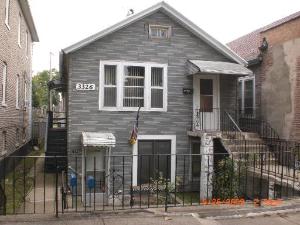Download or listen to Bridgeport 2
Note: – this is best listened to at a volume as if you were close up front and center to a fairly powerful orchestra.
Story: In response the popularity of Michael Sheiman’s silver and phi tunings Michael Sheiman and Cameron Bobro joined forces to create a “Super Particular” tuning system for me to compose with. This piece is the first created with this tuning.
1/1 0.000 —– unison, perfect prime
13/12 138.573 —– tridecimal 2/3-tone
9/8 203.910 —– major whole tone
39/32 342.483 —– 39th harmonic, Zalzal wosta of
117/88 493.120
63/44 621.418
3/2 701.955 —– perfect fifth
25/16 772.627 —– classic augmented fifth
5/3 884.359 —– major sixth, BP sixth
16/9 996.090 —– Pythagorean minor seventh
24/13 1061.427 —– tridecimal neutral seventh
25/13 1132.100
2/1 1200.000 —– octave
The realization uses Sonar 8.5 and Garritan Personal Orchestra 4 (Aria player) and relies heavily on Sonar’s sequencing interface. The compositional method was the creation of a number of sequenced motives which were combined as needed with overlays of more traditionally composed portions.
A couple notes on the tuning:
From Michael
I found that tuning the middle C AKA 1/1 to about 75/76 * middle C = approximately 258hz realigns the tonal centers in such a way it works well for re-tuning 12TET pieces. I tried this with Beethoven’s “Drei Equeli” (sp.?) and it works well with about 90-95% of the notes. Makes me wonder just how pitch and perhaps alignment with the basilar membrane can skew perception of intervals as, of course, many of the intervals in the scale are very non-12TET like.
and
Super particular….to the best of my understanding that’s what Cameron used to fine-tune the scale. It includes reducing intervals between two tones to fractions like 21/20 and 15/14 AKA (n + 1)/n. As I understand it Cameron managed to make all dyads follow this format (and that’s how he came up with odd high-numbered fractions that, miraculously, sound better than the low numbered ones).
In general in the scale:
1) Close tones have more periodic consonance (due to super-particular format) but less critical band consonance
2) Far tones don’t match super-particular relationships perfectly (though they still get fairly close) so they lose some periodic consonance…but they are further apart and thus have more critical band consonance
This combination of the 2 types of consonance balances out so the average consonance of dyads both closer and further apart stays fairly similar…as opposed to 7-tone diatonic JI where closer tones/dyads (IE the 15/14 half-step so often avoided in common-practice chords) often have BOTH lower periodic consonance AND lower critical band consonance than ones further apart. It’s all about balance….
And from Cameron
The intervals between the scale steps were all superparticular (n+1/n) except those couple, so I just made the steps superparticular. Scales that are composed only of superparticular steps tend to be smooth and “as one” sounding, something noticed and applied thousands of years ago.
And in response to Michael’s last couple paragraphs
Yes that’s what superparticular means- n+1/n. It is the same as being adjacent partials in a harmonic series. Most of the ancient Greek theory tried to stick only to superparticular ratios. This isn’t numerology, it keeps the overall complexity of a tuning way down, even if you wind up with what looks like complex intervals in the tuning, as you can easily verify by ear. It is especially noticeable on an acoustic instrument.

Leave a Reply